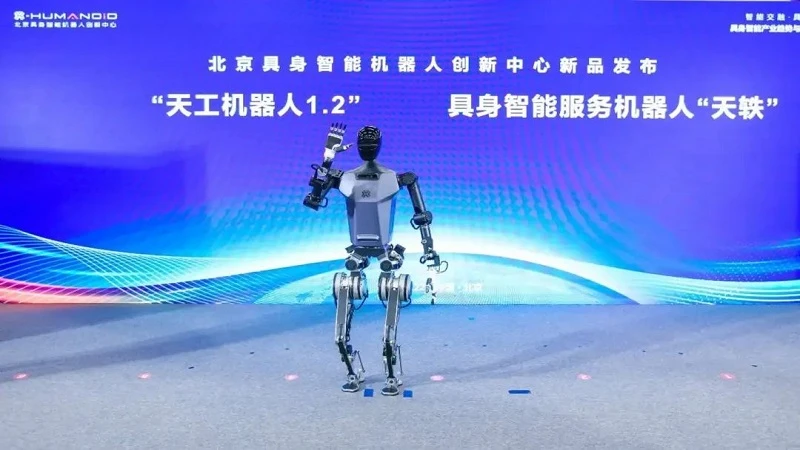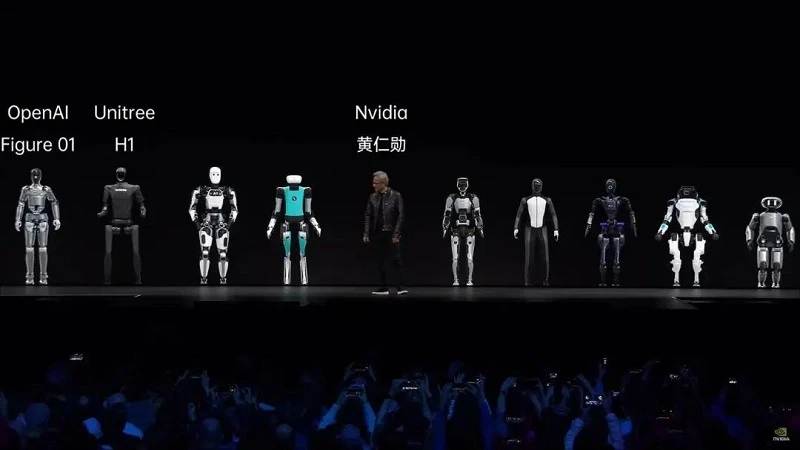For the past decades, the competition to establish the first "humanoid robot city" has intensified across major cities in China. As humanoid robots become more advanced, various regions are launching innovative centers, government-backed initiatives, and industrial collaborations aimed at becoming leaders in this rapidly emerging field. Despite the current uncertainty around commercialization, this race signals a significant shift in the landscape of robotics and technology.
The origins of this race can be traced to the establishment of humanoid robot innovation centers across China. In late 2023, Beijing launched the Beijing Humanoid Robot Innovation Center, spearheaded by the Ministry of Industry and Information Technology. Major tech players like UBTech, Xiaomi, and Jingcheng Electromechanical joined forces to lead this initiative, each holding a 28.57% share in the center. These founding members collectively authorized more than 600 humanoid robot-related patents to the innovation center, paving the way for future developments.
Similarly, Shanghai inaugurated its own humanoid robot center in May 2024, which includes a training facility capable of accommodating 100 humanoid robots for intelligent training. This facility is expected to expand to support 1,000 robots by 2027. Not to be outdone, Shenzhen also established its Embodied Intelligence Robotics Center, backed by organizations like the Chinese University of Hong Kong (Shenzhen) and AI-driven enterprises such as AIRS and Leap Robotics.
In addition to these cities, provinces such as Zhejiang, Sichuan, and Anhui are also setting up humanoid robot innovation centers, aiming to capitalize on the growing momentum in this sector. These collaborative efforts between local governments and enterprises highlight the strategic importance of the humanoid robot industry.
Humanoid Robots: Government-Backed Initiatives
The rise of humanoid robots is not just a private sector endeavor; it has also garnered significant government support. Tesla founder Elon Musk's emphasis on humanoid robotics helped spark global interest, and China's response was led by young entrepreneurs and startups. Since 2023, companies like Unitree Robotics, Fourier Intelligence, and Leap Motor have introduced a range of humanoid robot products, with many founders hailing from the younger, tech-savvy generation born in the 1990s.
As the sector evolves, government-backed humanoid robot innovation centers have emerged, and state-owned capital is increasingly participating in early-stage financing for startups. This deep government involvement in a nascent industry is a notable departure from previous trends, such as the autonomous driving wave a decade ago. According to Lenovo Ventures Vice President Wang Guangxi, this shift can be attributed to both the changing capital market landscape and the long value chain required for humanoid robots, which spans from AI software to hardware and real-world applications.
Beijing's Embodied Intelligence Robotics Innovation Center exemplifies the benefits of this government-corporate collaboration. Established in late 2023, the center launched China's first general-purpose robotic platform, "Tiangong," within just four months. This platform also achieved the world's first humanoid robot powered entirely by electric drives to simulate human running, a significant technological milestone. The center plans to supply over 100 Tiangong robots to key research institutions and universities for further development, accelerating research and application in the humanoid robotics field.
North-South Divide: Competition for Leadership
The race to become the first humanoid robot hub highlights the regional differences in resource allocation and industrial focus across China. The supply chain for humanoid robots varies greatly depending on the location. According to Guo Tao, CTO of Paitian Robotics, the Yangtze River Delta (YRD) region, which includes cities like Shanghai, Jiangsu, and Zhejiang, boasts a well-established supply chain for industrial robots. This makes it easier for hardware manufacturers to find the necessary parts for humanoid robots, which are even more complex than their industrial counterparts.
For instance, the YRD region's expertise in manufacturing motors, cables, and other essential components has given it an edge in hardware production. Meanwhile, China's rapid development in the electric vehicle (EV) industry, particularly in the YRD, has further bolstered the humanoid robot industry. EV advancements have led to higher efficiency and miniaturization of key components like batteries and motors, many of which can be repurposed for humanoid robots.
While the South excels in hardware, the North, particularly Beijing, leads in software development, particularly in AI and large-scale model training. As of March 2024, Beijing had developed over 115 large-scale AI models, more than any other region in China. This includes products from tech giants like Baidu, JD, and ByteDance, which have applications in content generation, intelligent Q&A, IT support, and more.
This North-South divide represents a complementary relationship between the two regions, with the South's hardware and the North's software working together to drive innovation in the humanoid robot industry.
The Road to General-Purpose Robots
Despite these advancements, the path to creating general-purpose humanoid robots—robots capable of performing a wide range of tasks in real-world environments—is still fraught with challenges. Current humanoid robots, while impressive, are largely specialized, performing specific tasks in controlled environments. As Wang Xinxing, founder of Unitree Robotics, noted, much of the progress made in the past two years has been built on open-source technologies for quadruped robots. However, the development of humanoid robots requires more than just AI models; it demands significant advances in hardware, control algorithms, and real-world testing.
The large-scale AI models that have revolutionized human-computer interaction, such as OpenAI's ChatGPT, provide a glimpse into the potential for humanoid robots. However, Wang cautions that the humanoid robotics industry has not yet reached the "miracle stage" where simply adding more computing power and data will yield major breakthroughs. The technological roadmap for humanoid robots is still unclear, and companies are approaching investments in this field with caution.
In the meantime, companies are focusing on more immediate commercial opportunities. For example, Galaxy Robotics plans to introduce humanoid robots to pharmacies and supermarkets, where they will assist with tasks like night-time staffing and medication delivery. These robots, equipped with wheeled bases instead of legs, are cheaper, more stable, and longer-lasting, making them ideal for specific use cases.



